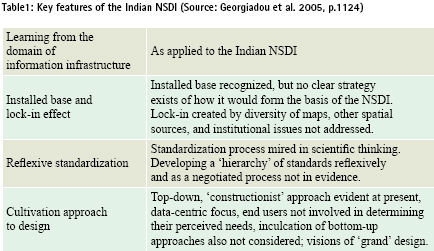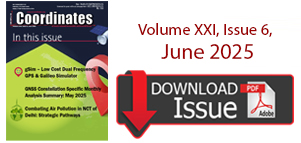
Loran is best. Keep it!
Says a recent study which was completed in March 2007 by the Independent Assessment Team (IAT). The report has been let out of detention, just in time to counter recent efforts by the Obama administration, the Department of Homeland Security, and the US Coast Guard to throttle the program. The IAT “unanimously recommends that the US government complete the eLoran upgrade and commit to eLoran as the national backup to GPS for 20 years.” The IAT’s conclusion has long been informally known throughout the GPS industry, but the report’s release adds considerable weight, expertise, and specifics to a long, determined campaign to preserve the program. Release of this report now comes only after an extensive Freedom of Information Act (FOIA) battle waged by industry representatives against the federal government. The report asserts that “eLoran is the only cost-effective backup for national needs; it is completely interoperable with and independent of GPS, with different propagation and failure mechanisms. … It is a seamless backup, and its use will deter threats to US national and economic security by disrupting (jamming) GPS reception.” www.ida.org
…Senate Committees support eLoran
Two leading Senate committees publicly back the eLoran system and question the US President’s latest budget proposal. The FY 2010 Concurrent Budget Resolution releases views from the US Senate Committee on Commerce, Science and Transportation and the Committee on Homeland Security and Governmental Affairs backing the continued support for the Loran system, acknowledging the investment already made in infrastructure upgrades and recognizing the studies performed and multi-departmental conclusion that eLoran is the best backup to GPS. Senator Jay Rockefeller, the Chairman of the Committee on Commerce, Science and Transportation, wrote the committee recognized the priority in “maintaining LORAN-C while transitioning to eLORAN” as means to enhance the homeland security, marine safety and environmental protection missions of the Coast Guard. Senator Collins, the ranking member on the Committee on Homeland Security and Governmental Affairs wrote that the President’s budget overview proposal to terminate the LORAN-C system is inconsistent with the recent investments, recognized studies and mission of the US Coast Guard. The letter recognizes the $160 million investment already made toward upgrading the LORAN-C system to support the full deployment of eLoran http://budget.senate.gov/republican/ pressarchive/CommitteePrint.pdf
…US proposal to terminate loran-C draws fire from UK
A last-minute change in US loran policy has raised serious concerns among international navigation and security organizations. In late February, the Office of Management and Budget (OMB) removed loran-C funding from the President’s budget, provoking an immediate response from the UK. The key issue was the continuing need for loran-C and eLoran to provide a backup to GPS, in the event of satellite failures or signal disruption. The UK’s position was that until the OMB’s announcement, the US supported the view that loran provides a backup to GPS, with the Department of Homeland Security stating that loran “will mitigate any safety, security or economic effects of a GPS outage or disruption.” In January, a highlevel DOT panel of independent experts, chaired by Professor Brad Parkinson – the former USAF official in charge of satnav development, now dubbed “The father of GPS” – unanimously recommended that “the US government complete the eLoran upgrade and commit to eLoran as the national backup to GPS for 20 years.” Today, government and commercial communications, finance, utilities, ATC and many other vital services in the US and overseas depend on precise GPS timing, and loran-C and eLoran are the only long-range, unjammable backups that can provide comparable accuracy. www.ainonline.com

It is sometimes suggested that spatial data is just another form of data that can now be maintained in a data base and that in reality there is nothing “special about spatial”. Nothing could be further from the truth. For example spatial data is not the same as integer, alphanumeric or symbolic data for a number of reasons. These are: spatial data is scale dependent: do I query for 37.3N 45.2W..or? spatial queries are endemically computationally expensive…

For the final evaluation of a GPS attitude determination algorithm (GADA), it was determined its true performance in terms of its accuracy, reliability and dynamic response. To accomplish that, a flight test campaign was carried out at the Brazilian Flight Test Division (GEEV) to validate the attitude determination algorithm. In this phase, the measured aircraft attitude was compared to a reference attitude, to allow the determination of the errors…

On August 21, 2008 the cabinet approved the proposal of the Department of Land Resources (DoLR), Ministry of Rural Development to merge two existing centrally sponsored schemes and replace them with the modifi ed scheme of National Land Records Modernization Program (NLRMP). The two schemes being merged are the Strengthening of Revenue Administration & Updating of Land Records (SRA&ULR) and Computerization of Land Records (CLR).

Iwave launches SiRF III based GPS module in India
Iwave Systems Technologies Private Ltd has unveiled iw-GPS receiver module based on SiRF III, a low power, miniature module for Personal Navigation, fleet management, asset tracking, personal tracking, surveying, security and other navigation devices. www.iwavesystems.com

Coastal navigation upgrade
The UK’s General Lighthouse Authorities (GLAs) have awarded a £4m contract to VT Communications for the upgrade of 14 Differential Global Positioning Service reference stations. The upgrade includes adding the capability to use modernised GPS signals that will be needed for tracking the future satellite navigations systems, Galileo and GLONASS. www.vtplc.com

Special characteristic of spatial data is that it can be shared and used for many other purposes than the one, for which, it was originally produced. To facilitate its efficient sharing and reuse, it needs to be properly managed in the form of infrastructure i.e. Spatial Data Infrastructure (NSDI). This is one of the reasons that many countries are developing National Spatial Data Infrastructure (NSDI). But the challenge of developing a successful NSDI depends largely on its implementation which is so significant that none of the two key stakeholder groups i.e. public or private sectors can address it at their own. Therefore, if efforts are made to implement such initiatives by only one of the key stakeholder groups then the result may be partially if not totally failure to get the tangible benefits truly intended from such initiatives. As an example, Indian NSDI is explored in this context.

Prem Shanker
Goel is Secretary to the Government of India,
Ministry of Earth Sciences (MoES).
India has recently launched the National Tsunami Early Warning System (TEWS) established by Ministry of Earth Sciences. Coordinates discussed various aspects of the TEWS with Dr P S Goel, Secretary to the Government of India, Ministry of Earth Sciences
Who can forget December 26, …

Real-time traffic information to reach more than 83 million users
According to ABI Research, real-time traffic information services will reach more than 83 million paid or registered users worldwide by 2012. It sees three elements to the puzzle of providing truly useful traffic data for navigation systems.
First, the traffic data collection ecosystem is very complex. Infrastructure measurement systems (road sensors, cameras, radar, or loop sensors) are expensive and hard to install. A second challenge is traffic data aggregation. As the basic data becomes more available, the complex data derived from floating-car probes or predictive modeling will become the differentiator. But such data are harder to integrate into navigation routing. A third factor is market landscape. ABI Research expects INRIX and NAVTEQ/Traffic. com to become the two players in traffic data. www.gpsbusinessnews.com









 (5.00 out of 5)
(5.00 out of 5)